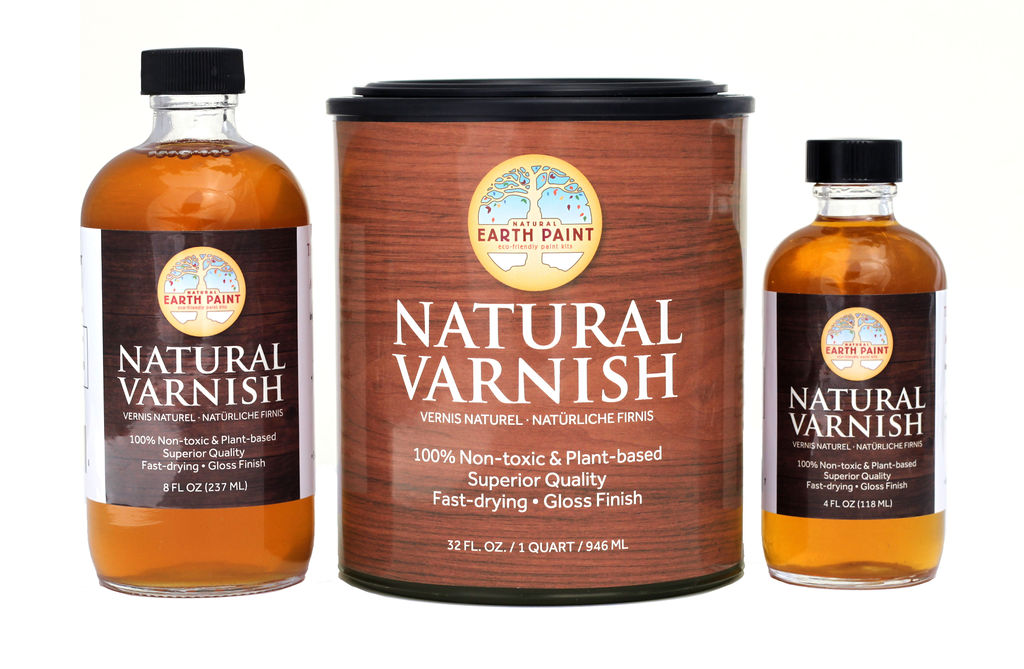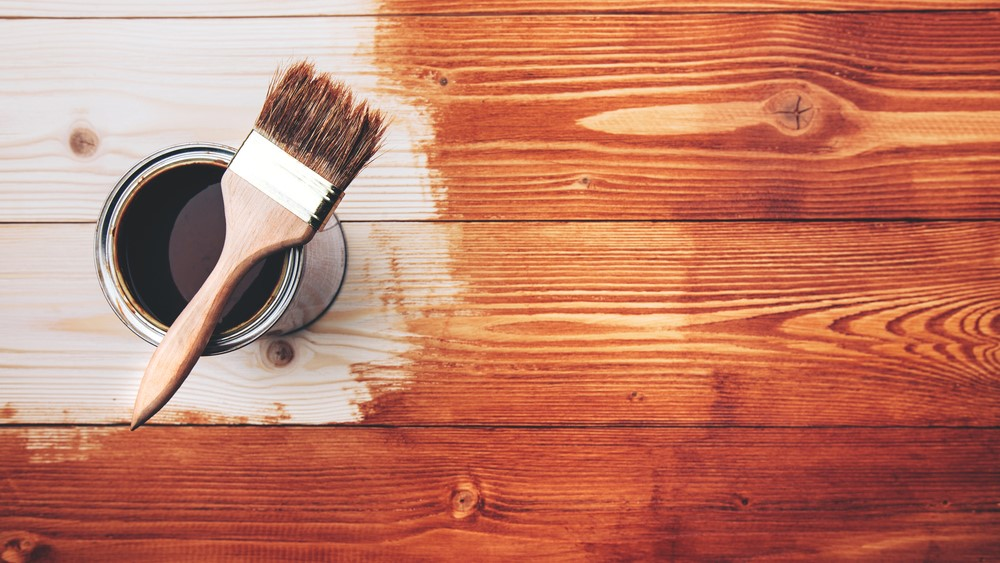Varnishes have been an integral part of preserving and enhancing the beauty of wood for centuries. However, the conventional varnishes often contain toxic chemicals and solvents that can have detrimental effects on health and the environment.
In recent times, there has been a growing interest in non-toxic and plant-based varnishes, which offer a sustainable and eco-friendly alternative for protecting wooden surfaces. These varnishes not only provide a protective coating but also maintain the natural look and feel of wood. In this article, we will delve into the world of non-toxic and plant-based varnishes, exploring their use in fine art, furniture making, and wooden flooring.

A Brief History of Varnishes
The art of varnishing dates back thousands of years, with evidence of its use in ancient civilizations such as Egypt and China. In the Middle Greek berōnikón, a substance used to protect wood and other materials, reflects the early roots of varnishing. Over time, the techniques and ingredients evolved, culminating in the creation of more modern varnishes.
Exploring Traditional Varnishes
Before the advent of non-toxic alternatives, a traditional varnish was the go-to choice for protecting wood. These varnishes often contained harsh solvents and toxic compounds that emitted strong fumes during application. While effective, these varnishes posed risks to health and the environment.

The Advent of the Plant-Based Varnish
The shift towards non-toxic and plant-based varnishes has been a gradual process, driven by a growing awareness of the harmful effects of conventional varnishes. Manufacturers and artisans alike have embraced the challenge of creating varnishes that provide the same level of protection without compromising safety.
For those looking for a completely plant-based option, spar varnish made from natural oils and resin provides an excellent solution. The drying oil derived from flaxseed, walnut, or hemp is a key ingredient in a typical spar varnish. These varnishes offer protection while allowing the wood to breathe.
Types of Non-Toxic Varnishes
There are several non-toxic varnishes available today, catering to various applications. One notable example is the polyurethane varnish. When formulated without toxic solvents, polyurethane varnish offers a durable and protective finish. Similarly, acrylic varnishes are gaining popularity due to their water-based nature and minimal VOC emissions.
Fine Art and Varnishes
In the realm of fine art, varnishes play a crucial role in preserving and enhancing paintings on wood panels. Traditionally, a spirit varnish was used. These varnishes contain a high concentration of resins and may start to yellow over time. As the years pass, the protective coat may take on the appearance of amber colored glass. However these varnishes have largely been replaced by more modern and non-toxic options. Artists now have access to a variety of plant-based varnishes that allow them to protect their artwork without compromising their health or the environment.
Furniture Making and Wooden Furniture
Furniture makers have long relied on varnishes to add a protective layer to their creations. Yacht varnish is a well-known choice in this domain, offering a glossy finish that is resistant to moisture, heat, and the elements. Using non-toxic alternatives ensures that the furniture remains safe for indoor use and poses no risk to human health.
Wooden Flooring and Beyond
Wooden flooring is subjected to heavy foot traffic and various forms of wear and tear. Non-toxic varnishes provide a resilient and durable protective coat that keeps wooden floors looking their best while minimizing the impact of daily use.
Techniques to Apply Varnish
Applying varnish requires care and precision. A natural bristle brush is commonly used for smooth and even application. Proper technique ensures that the varnish adheres well to the wood, creating a lasting and effective protective layer.
The Beauty of Natural Ingredients
One of the primary attractions of non-toxic and plant-based varnishes is their use of natural ingredients. Oils and resins derived from plants provide a level of authenticity that synthetic varnishes often lack.
Varnishes for Different Surfaces
Non-toxic varnishes are versatile and can be used on various surfaces beyond wood. Lacquer-based varnishes are suitable for both wood and metal, making them a preferred choice for artists and craftsmen.
The Solvent Dilemma
Traditional varnishes often require the use of harsh solvents for thinning and application. In contrast, non-toxic varnishes can be thinned with water-based solutions, reducing exposure to harmful chemicals.
Quick Drying and Convenience
Many modern non-toxic varnishes offer quick-drying properties, allowing for faster application and reduced downtime. This is particularly beneficial for professionals who need to complete projects efficiently.
The Main Purpose of Varnishes
The main purpose of any varnish is to protect the underlying surface. Non-toxic varnishes excel in this regard, forming a durable and resilient barrier against moisture, UV rays, and everyday wear.
Enhancing Aesthetics
Beyond protection, varnishes also contribute to the aesthetic appeal of wood. Different finishes, such as matte or glossy, can be achieved with non-toxic varnishes to suit various design preferences.
The Role of Varnishes in Preserving History
In restoration and conservation efforts, non-toxic varnishes have found a significant role. They help preserve historical artifacts, wooden structures, and cultural heritage, ensuring that they remain intact for future generations.
Environmental Benefits
Choosing non-toxic and plant-based varnishes aligns with eco-friendly practices. These varnishes often have lower environmental impact, from production to disposal, making them a responsible choice for conscious consumers. You can order non-toxic plant based varnishes online from Natural Earth Paint Canada.

Health Considerations
Toxic fumes from conventional varnishes can be harmful to health, especially when applied in enclosed spaces. Non-toxic varnishes emit fewer volatile organic compounds (VOCs), making them safer for both the applicator and occupants.
Durability and Longevity
Non-toxic varnishes are durable and offer long-lasting protection. With proper application and maintenance, the protective coat remains intact, preventing damage and extending the lifespan of wood.
Applying Varnish
Applying non-toxic varnish requires attention to detail. The surface must be clean and free from debris, and the varnish should be applied in thin and even coats. This ensures proper adhesion and minimizes the risk of cracking or peeling.
The Role of Resins in Varnishes
Resins derived from trees, such as pine, are integral components of many non-toxic varnishes. These resins contribute to the varnish's protective properties and enhance its adhesion to the wood.
Sun Exposure and Varnishes
Exposure to sunlight can cause wood to fade and deteriorate over time. Non-toxic varnishes with UV-resistant properties provide an additional layer of defense against the damaging effects of the sun.
Wooden Flooring and Moisture Protection
Wooden flooring is particularly susceptible to moisture damage. Non-toxic varnishes act as a barrier, preventing moisture from seeping into the wood and causing warping or decay.
Non-Toxic Varnishes for Kitchen Cabinets
Kitchen cabinets are exposed to heat, moisture, and constant use. Non-toxic varnishes can withstand these conditions, protecting the wood and maintaining the beauty of the cabinets.
Traditional vs. Plant-Based Varnishes
Comparing traditional varnishes with their plant-based counterparts reveals distinct differences in composition, application, and overall performance. Plant-based varnishes offer a safer and more sustainable option.
Achieving a Desired Gloss Level
The gloss level of a varnished surface can be adjusted according to preference. Non-toxic varnishes offer a range of options, from high-gloss to matte, allowing users to customize the appearance of their woodwork.
Wood Protection in Outdoor Settings
Wooden structures exposed to the elements require robust protection. Yacht varnish, with its exceptional durability and resistance to harsh weather conditions, serves as an excellent choice for outdoor applications.
Multilayered Approach
Applying multiple layers of varnish can enhance protection and durability. Each layer adds an additional shield, making the wood more resilient to scratches, stains, and other forms of damage.
Considerations for Brushing Techniques
The technique used for brushing varnish plays a role in the final outcome. Smooth and controlled strokes ensure even coverage and a professional finish.
Tailoring Varnishes for Different Applications
The world of varnishes is diverse, catering to various needs. Polyurethane varnishes are prized for their toughness and longevity, making them a top choice for high-traffic areas such as floors. Acrylic varnishes find their niche in the art world. An acrylic varnish is highly valued for its quick-drying and water-based nature.
Non-Toxic Varnishes for Art Restoration
Restoring antique wooden artifacts and art pieces requires a delicate touch. Non-toxic varnishes provide conservators with a safe and effective means of rejuvenating and preserving these cherished items for future generations.
Collaborative Efforts for Sustainability
The demand for non-toxic varnishes has sparked collaboration between artists, craftsmen, manufacturers, and environmentalists. This collaborative effort aims to create products that meet the needs of both creators and the planet.
Making Informed Choices
When choosing a non-toxic varnish, it's essential to read labels and understand the composition of the product. Look for certifications or eco-friendly labels that indicate a commitment to sustainability and safety.
Conclusion
In the quest for sustainable, non-toxic solutions, the world of varnishes has witnessed a transformative shift. The emergence of plant-based and environmentally-friendly varnishes has opened up new possibilities for artists, craftsmen, and homeowners. From fine art to furniture and wooden flooring, these varnishes embody a commitment to preserving both the beauty of wood and the health of individuals and the planet. As the movement towards non-toxic alternatives gains momentum, the future of varnishing is undoubtedly a greener, safer, and more sustainable one.


 naturalearthpaint.ca
naturalearthpaint.ca